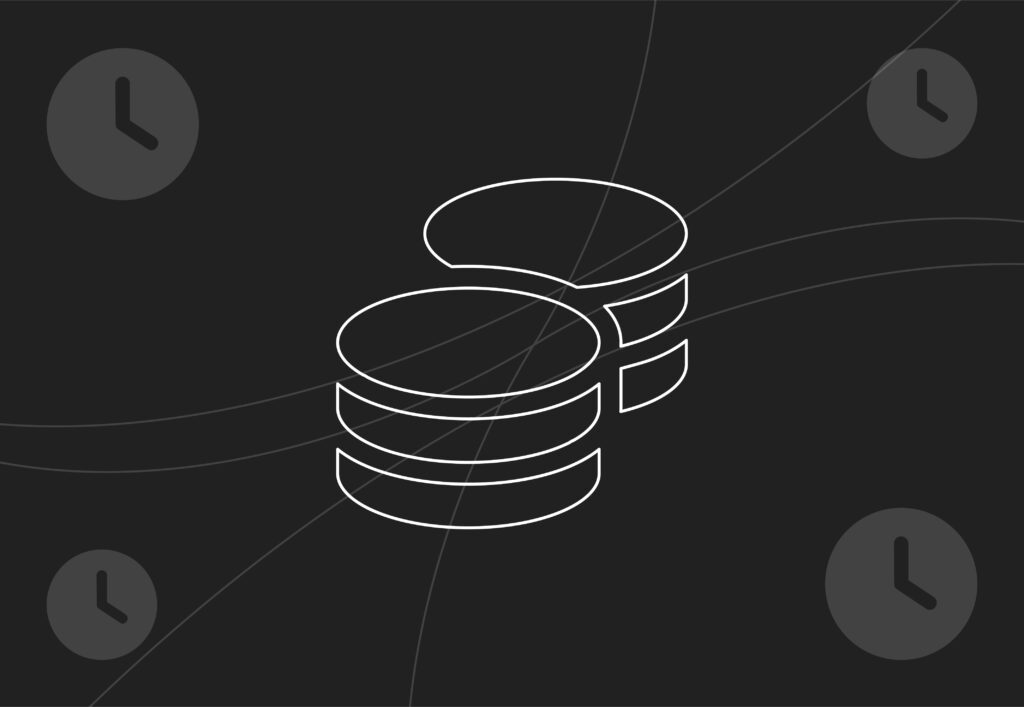
Understanding the power of B2B data using stats on Cognism

As digital marketers have more data readily available at their fingertips thanks to analytics platforms and other tools, data is no longer just a byproduct of marketing activity. Instead, it underpins key decisions and strategies designed for business growth. Looking at it through the lens of business-to-business (B2B) data, this is changing how companies approach their sales and marketing, as well as ongoing customer engagement.
With the right data at their disposal, businesses can use this to uncover new leads, personalise their outreach, and optimise their strategies, all to improve their return on investment (ROI). This can be the difference between failing or thriving in a competitive market, especially given that successful B2B marketing and sales relies on precise targeting, effective lead generation, and the ability to build relationships. With data, companies can understand their audience, and tailor their messaging and offering accordingly.
So, where does Cognism come into this? Well, firstly let’s understand what Cognism is – it’s a leading provider of B2B data solutions, and gives users a comprehensive platform that delivers B2B data for whatever it is they want to see. Whilst Cognism provides useful contact details for target companies, their data solutions go beyond this too, as we’ll explore a little later on.
In this blog, we’ll explore the importance and power of B2B data when it’s used correctly, and how a tool like Cognism can help evolve business strategies.
What is B2B data?
The term ‘B2B data’ refers to any information collected about businesses that can then be used to inform marketing, sales, and other strategic business decisions within the B2B space. The data available encompasses a wide range, but it typically includes firmographics, technographics, behavioural insights, and contact details for key stakeholders.
We’ll explore these in further detail later, but for now, note that this data can help brands identify potential leads, segment their audiences, personalise outreach, and improve relationships. All of this contributes to driving growth and efficiency within B2B operations.
B2B data presents unique challenges and, equally, opportunities when compared to the finding and the use of B2C data. B2B data often concentrates on company-level information and decision-makers, whereas B2C data on the other hand will focus primarily on consumer behaviours throughout the funnel, and preferences. In the B2B space, data must be accurate as decisions involve multiple stakeholders, requiring deeper segmentation.
As such, B2B data can be considered more complex, especially as those seeking it must rely on various platforms and levels of verification. That being said, whilst B2B data does come with its challenges, it offers opportunities for highly targeted and relationship-driven marketing, empowering businesses to create and maintain long-term relationships with personalised outreach as a starting point.
Types of B2B data
Within the B2B space, several types of data can all play their part in targeting, engaging, and converting business. Here, we’ll give a concise overview of some of the most crucial elements…
Firmographics: This data gives businesses key information about other businesses that fall into their target market. This can include industry type, company size, revenue/turnover, market segment, and where they are located. As such, this data helps businesses to understand which companies mirror who their target market/ideal leads are. It can also help them to tailor their marketing to specific locations and sectors, standing them in good stead for generating better leads.
Technographics: This details a technology stack that a company uses from software to tools and other platforms that they have in place. This is crucial data for B2B companies that offer solutions that could be relevant, but that also operate in competitive spaces. This data can give them the edge by knowing who to reach out to and who might be considering upgrading, replacing, or integrating new technologies.
Behavioural insights: This data looks at how companies engage with content, what their purchasing patterns are, and their previous interactions whether that be email interactions or website visits as a couple of examples (for the latter, Lead Forensics is a handy tool). These insights can arm marketers with knowledge about the intent and behaviour of their target audience, so they can then personalise outreach strategies.
Contact details: Getting contact data is another B2B tactic that gives businesses details on other key stakeholders in their target companies. This is vital for direct outreach. Platforms like Cognism can give titles, names, email addresses, phone numbers, and social media profiles, so you can connect with the right people and at the right level.

Why data-driven decisions matter in B2B
The term ‘data-driven decision’ gets thrown around a lot in the digital marketing world, and you might be guilty of overlooking it. But, truth is, the concept deserves all the attention it gets and it’s certainly no exception for B2B activity either. There’s a reason why, according to Forbes, companies that use data-driven marketing are six times more likely to be profitable year-on-year (YoY).
The shift towards data-driven decision-making is now essential, and especially in this sector – companies are increasingly relying on data to guide their decisions, and so if you fail to do so, you could be left behind.
This shift has been made easier with the availability of analytics tools, AI-powered tech, and the sheer amount of user data that can be analysed from channel interactions.
With that in mind, here’s why data, and data-driven decisions, matter in the B2B space…
- You can identify which marketing channels are most effective and at what stage of the buyer journey. This can help you push and pull different areas/levels of spend wherever needed and work to a marketing efficiency ratio to do so.
- It can also help you to assess which messaging resonates most with your audience, and which offering is in demand. You can therefore allocate your resources more strategically.
- Having data to hand can help you to be more specific with your audience segmentation – this can be done through analysing firmographics, behavioural data, and interactions. You can then segment these groups and tailor your outreach accordingly, ensuring that the right message is delivered.
- This in itself is a key benefit of using data in B2B – personalisation is one of the key factors in not just surviving, but thriving amongst other B2B competition.
Ultimately, data-driven approaches underpin success and increase your chances of achieving a higher ROI thanks to effective campaigns that are much more personalised and backed by real data.
The role of Cognism in B2B data
Cognism is one of the leaders in its space, and it provides users with real-time B2B data, which is designed to help businesses optimise their sales and marketing activity. Unlike traditional providers, Cognism uses AI and delivers insights and data at scale. It’s all delivered in real time too, meaning that companies can act quickly with any new opportunities that arise.
One of Cognism’s key features is its ability to generate accurate leads, putting firmographics, technographics, and contact details to use. Users can filter through results for specific industries, job titles, and geographical locations and get generated results that mirror what they’ve asked for. The platform can also integrate with CRMs, making it easy for businesses to put their prospects’ details straight into their own systems and handle the data directly within them. This is particularly useful for refining audience segmentations.
But, how does Cognism get its data? In short, it’s through a mixture of technology including AI, machine learning, web scraping, and partnerships. AI allows it to update and verify data automatically, whilst machine learning allows Cognism to improve over time when it comes to
identifying prospects. Web scraping gives Cognism the ability to gather large amounts of data from various sources online, whilst forming and leaning on partnerships from trusted providers helps to enrich the quality of the information that users can gather.
Facts and stats on Cognism that show the power of B2B data
One of the clearest ways to digest the power of B2B data and Cognism is to look at statistics and facts regarding its capabilities and its impact. Let’s take a look at some data from Cognism…
Improvements with Cognism
- Companies using Cognism’s data have experienced a 40% increase in qualified leads.
- Businesses leveraging Cognism’s platform have achieved a 25% improvement in sales conversion rates.
Organisations using Cognism’s data solutions have reported a 50% higher ROI on their outbound campaigns. - Cognism maintains a 95% accuracy rate in its contact data, ensuring reliable and up-to-date information.
- With access to accurate email addresses, businesses have improved their email engagement rates, leading to higher open and response rates.
- Businesses using Cognism’s AI-driven lead scoring have seen significant improvements in identifying high-value prospects.
- Companies have reported a shorter sales cycle by effectively targeting decision-makers using Cognism’s contact data.
- The platform’s robust data has improved lead qualification processes, ensuring that sales teams focus on the most promising leads.
- With accurate data, businesses have improved their lead nurturing processes, leading to higher conversion rates.
- By targeting the right prospects, businesses have reduced their customer acquisition costs.
- Access to reliable data has enhanced sales team efficiency, allowing for more focused and effective outreach.
Targeting
- Businesses have put Cognism’s data to use to conduct competitive analyses, informing strategic decisions.
- The platform’s detailed firmographics allow businesses to precisely target industries and companies that align with their ideal customer profile.
- By understanding customer behaviours and preferences through data, businesses have enhanced their customer retention strategies.
- Access to detailed data has enabled businesses to personalise their content marketing efforts, which has led to higher engagement.
- Cognism’s data has led to effective targeting for events and webinars, resulting in increased attendance and participation.
- The platform can identify potential partnership opportunities by analysing data across various industries.
Cognism’s reach and compliance
- Cognism has extensive global coverage, including regions like EMEA, NAM, and APAC, which is great for international business expansion.
- Cognism scrubs its data against DNC registries in multiple countries, such as the US, Canada, Australia, UK, France, and Germany, ensuring compliance and thus reducing legal risks.
- Over 3,000 companies worldwide trust Cognism for their sales intelligence needs.
- Cognism’s adherence to GDPR and other data protection regulations means businesses can trust the platform for compliant data usage.
- Cognism’s global data coverage has equipped businesses so that they can successfully enter and operate in new international markets.
Partnerships and processes
- Cognism sources its data through a combination of public records, partnerships, and proprietary methods, emphasising quality and compliance.
- The platform has rigorous verification processes, including phone validation, to maintain high data accuracy and reliability.
- Leveraging machine learning, Cognism provides predictive analytics to forecast sales trends and customer behaviours.

Challenges in B2B data management
Now for all of the data’s uses and benefits, it does come with things to consider and potential issues. Arguably, the most significant challenge is ensuring that the data you have is high-quality and accurate – you want to ensure you’re not handling incomplete, outdated, or incorrect data. This can lead to wasted resources, including time and money. On the other hand, inaccurate data can lead to missed opportunities, where high-potential prospects could be overlooked simply because data isn’t reliable.
Another challenge you may face is navigating the sheer volume of data that’s available, and some of it could be quite complex. There’s a lot of information that can come from different places such as third-party databases, CRMs, and social media, so sometimes it can be hard to digest all of this. If you are using databases, use the filters to narrow down your search and concentrate on the most valuable data available. Aside from that, automating processes could help you to process large volumes of data.
One of the other key things to consider is privacy regulations. There are the likes of GDPR to contend with, and as these continue to evolve it’s something that businesses will have to continue navigating to ensure they’re in the clear and remain compliant to avoid any financial penalty and also damage to their reputation.
Wanting to run data-backed campaigns that target the right people? We’re on hand!
As we’ve explored, there are a lot of things to consider when it comes to obtaining and using B2B data, but the core aim should be to lean into the data to inform your sales and marketing strategies. Here at Embryo, using data to run successful campaigns across the channels that target the right people is what we do day in, day out. If you’d like some guidance on your strategy or you’d like to hear more about how we work, please get in touch with our team today.


